Côte d’Ivoire is a West African country situated on the coastline of the Gulf of Guinea. It has a diverse ecosystem, ranging from savannas to rainforests, which are habitats for a wide range of bird species.
The avifauna of Côte d’Ivoire comprises over 700 species of birds, which makes it one of the richest bird species in Africa. Birds are an essential part of the country’s biodiversity, and many of the species are endemic to the country.
This list covers some of the most significant and well-known bird species that can be found in Côte d’Ivoire.
1. Heliornithidae
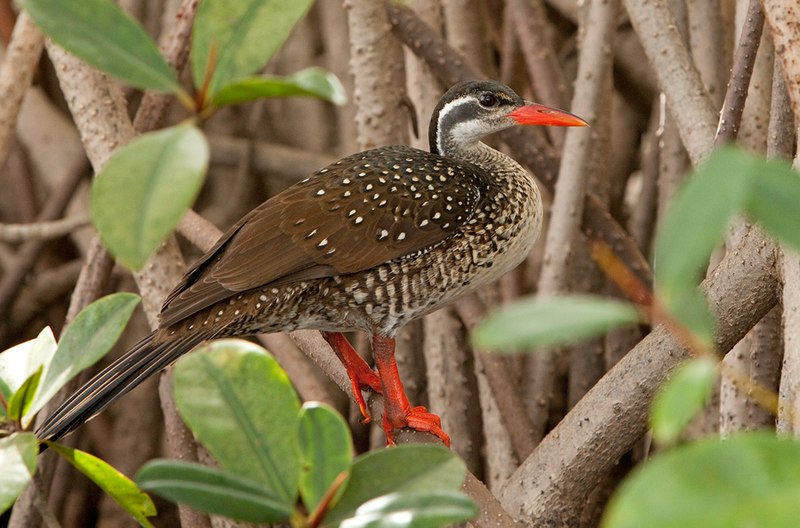
Heliornithidae, commonly known as finfoots, are a small family of tropical birds found in South America and Africa. They have webbed feet like grebes or coots, long necks, slender bodies and broad tails with sharp pointed bills.
Their diverse calls include whistles, squawks and croaks which they use to communicate with each other.
Finfoots feed mainly on fish but also consume insects such as water beetles and dragonflies near the surface of waterbodies.
They nest around rivers or lakes where there is plenty of cover from predators such as eagles or hawks.
During breeding season males can become quite territorial defending their territories against intruders by chasing them off aggressively using loud noises or even physical contact if necessary.Scientific classification:
| Kingdom | Animalia |
| Phylum | Chordata |
| Class | Aves |
| Order | Gruiformes |
| Family | Heliornithidae GR Gray, 1840 |
Also Featured In: Beautiful Brazilian Birds, Birds that Live in Guyana
2. Hamerkop
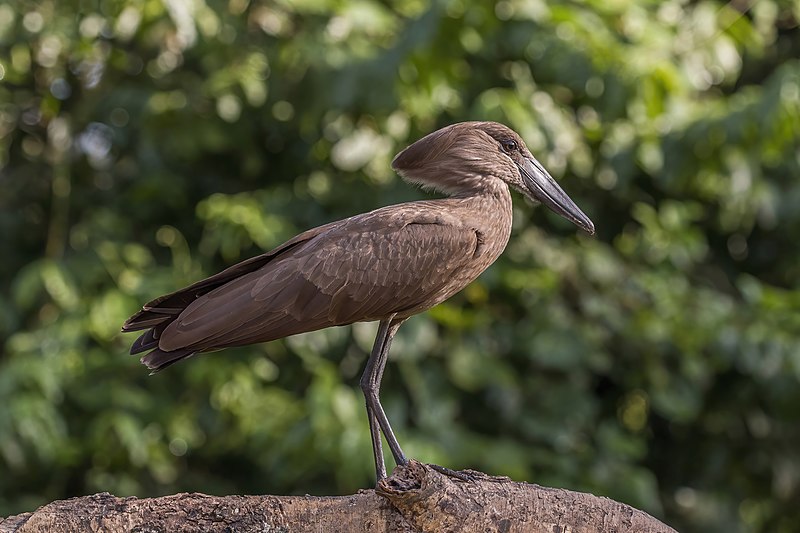
The Hamerkop is a unique wading bird found across sub-Saharan Africa and as far east as India.
It has an unmistakable silhouette, with its long bill topped by a crest at the back of its head that gives it the look of a hammerhead shark.
Its plumage consists mainly of browns and greys, providing excellent camouflage in reed beds.
The species was once classified alongside storks but is now believed to be closely related to pelicans and shoebills instead.
This medium-sized bird feeds on insects, fish, frogs or small reptiles which it captures from shallow water or plucks from trees near bodies of water.
Despite being considered ‘unlucky’ by some cultures due to superstition surrounding their appearance they are actually quite important for controlling populations of certain pests.Scientific classification:
| Kingdom | Animalia |
| Phylum | Chordata |
| Class | Aves |
| Order | Pelecaniformes |
| Family | Scopidae |
| Genus | Scopus |
| Species | S. umbretta |
Also Featured In: Common Nigerian Birds, Chad Birds You Didn’t Know
3. Red-Throated Bee-Eater
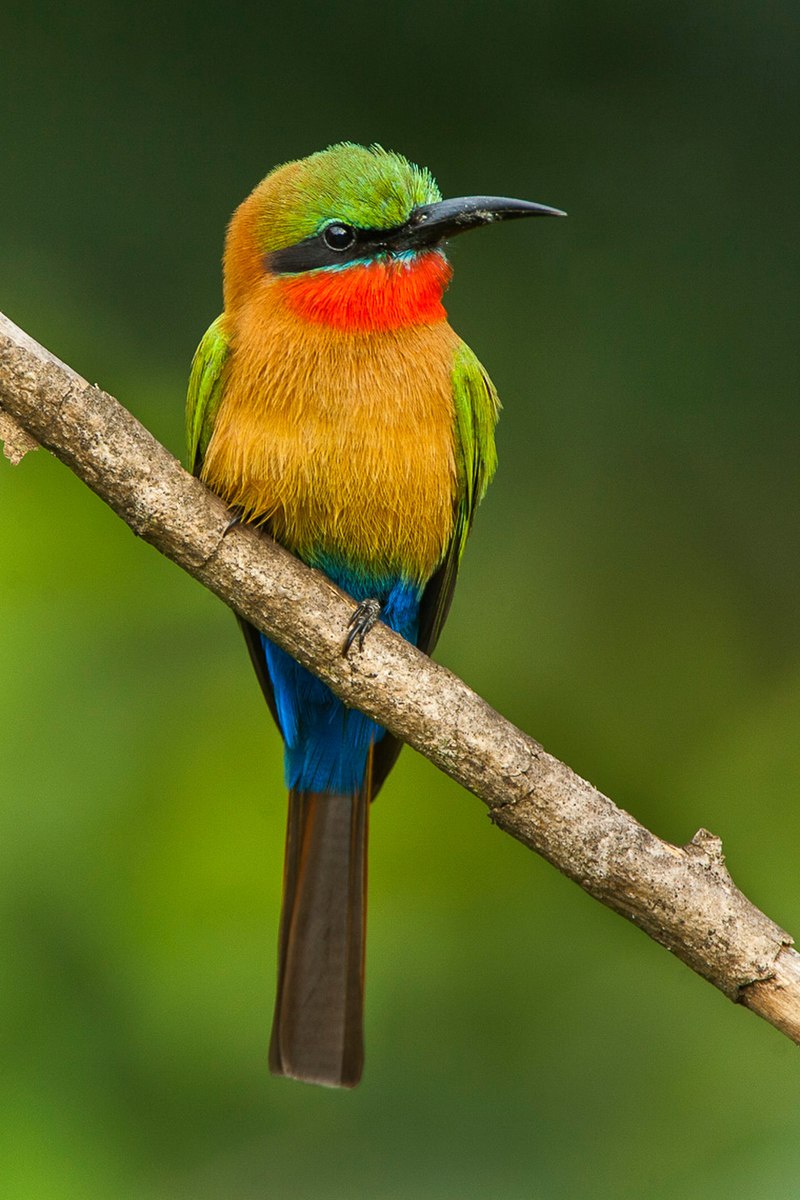
The Red-throated Bee-eater is a beautiful species of bird found in tropical Africa. It has bright red feathers covering its throat, giving it a distinct look.
Its body is mostly brown with white stripes and its wings are dark blue on the tips.
This species enjoys an extensive range throughout countries like Benin, Burkina Faso, and Togo to name just a few.
These birds feed mainly on insects that they catch in midair or from nearby foliage during their hunting flights over open country habitats such as woodlands and savannas.
While not much else is known about this particular type of bee-eater, these colorful creatures have surely become quite popular due to their striking beauty.Scientific classification:
| Kingdom | Animalia |
| Phylum | Chordata |
| Class | Aves |
| Order | Coraciiformes |
| Family | Meropidae |
| Genus | Merops |
| Species | M. bulocki |
4. African Jacana
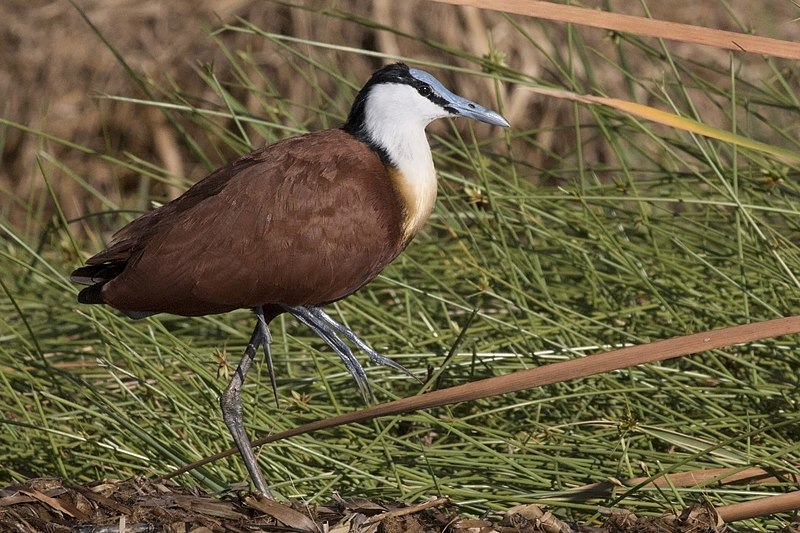
The African Jacana is a charming wader belonging to the family of Jacanidae, mostly found in sub-Saharan Africa.
It has long toes and claws that allow it to walk on floating vegetation in shallow lakes which form its preferred habitat.
The bird was officially described by Johann Friedri in 1789 with an interesting origin and pronunciation for its name -Jacanidae.
This aquatic bird is known for its striking plumage features like yellow crowns and black wings marked with chestnut brown stripes across them, making them look even more attractive when they spread their wing feathers during courtship displays.
They feed mainly on insects, tadpoles, frogs etc., skimming nearby water surface or plucking prey from vegetation as they wander around these wetlands areas.Scientific classification:
| Kingdom | Animalia |
| Phylum | Chordata |
| Class | Aves |
| Order | Charadriiformes |
| Family | Jacanidae |
| Genus | Actophilornis |
| Species | A. africanus |
Also Featured In: Birds of Tanzania, African Birds
5. Brown-Cheeked Hornbill
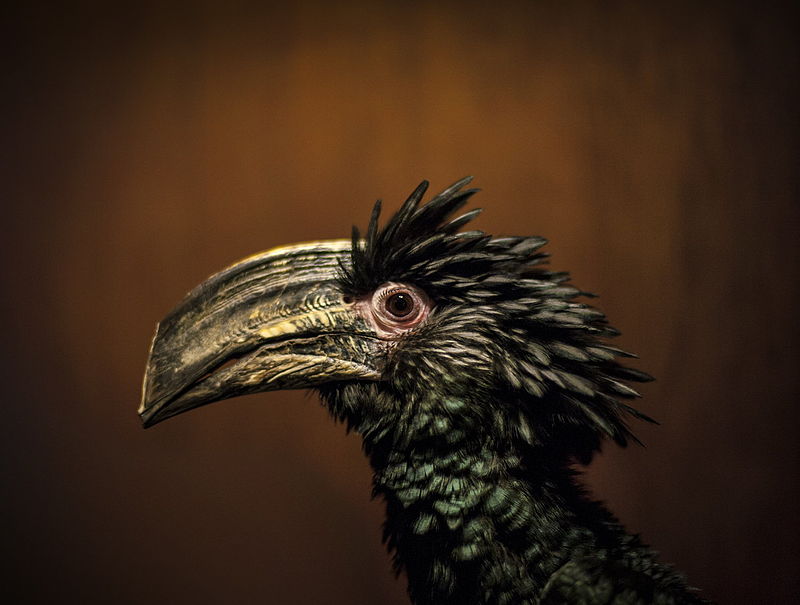
The Brown-Cheeked Hornbill is a species of bird from the Bucerotidae family, native to West Africa and found in countries such as Ivory Coast, Ghana, Guinea, Liberia and Sierra Leone.
It prefers to inhabit tropical or subtropical moist forests and plantations with secondary growths.
Unfortunately its populations are declining due to habitat destruction caused by human activities such as timber harvesting.
This beautiful bird has brown feathers on its body while it’s head feathers are black with yellow stripes running down either side at the top of their heads towards the eyes which have blue skin around them.
The males also feature an orange bill while females lack this trait completely instead having a dark grey one.
Despite being threatened they remain quite common across their range however conservation efforts must be undertaken if we wish for these birds continue living happily for many more years.Scientific classification:
| Kingdom | Animalia |
| Phylum | Chordata |
| Class | Aves |
| Order | Bucerotiformes |
| Family | Bucerotidae |
| Genus | Bycanistes |
| Species | B. cylindricus |
Also Featured In: Common Birds In Ghana,
6. Yellow-Casqued Hornbill
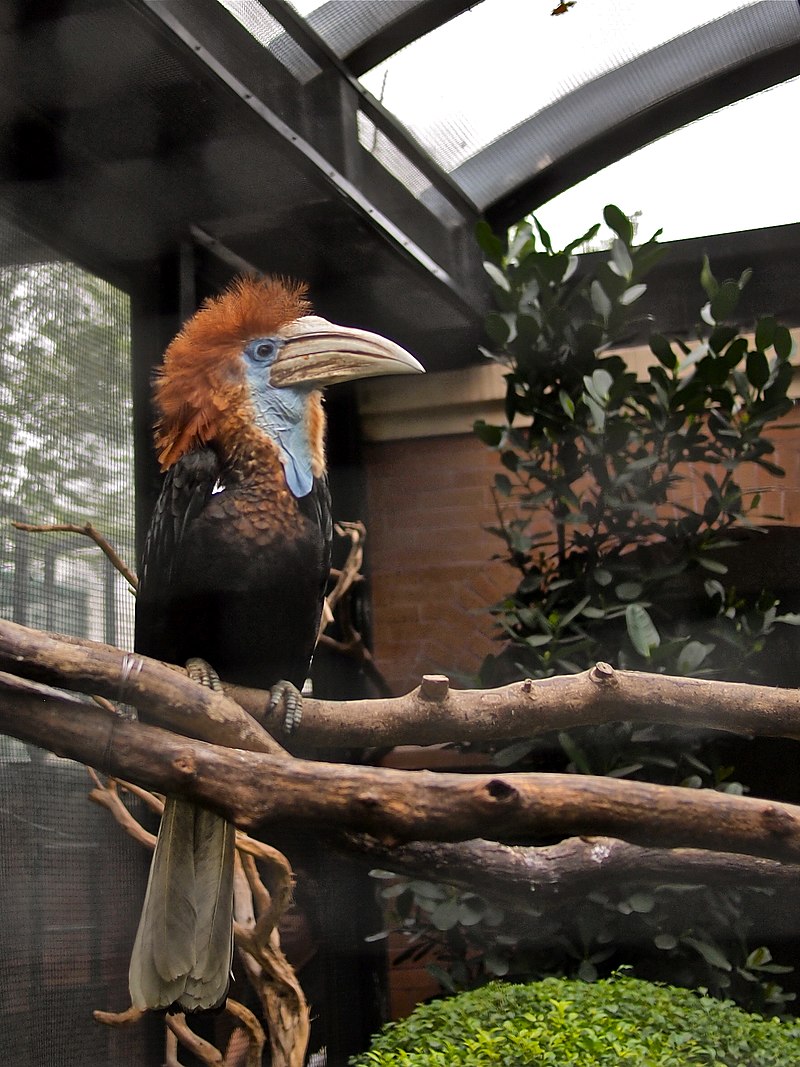
The Yellow-casqued Hornbill is an impressive bird found in the rainforests of West Africa. It has a bright yellow casque on its head and weight up to 2kg, making it one of the largest birds in its region.
Its primary habitat is in the canopy where they feed mostly on fruits, insects and small animals like lizards or frogs.
They are known for their loud calls which can be heard from far away during mating season when pairs join together to nest near tree hollows or cavities built by other species.
A monogamous pair stays together throughout breeding season with both parents taking turns incubating eggs and feeding chicks until they’re able to fly off into independence day.
These unique creatures have adapted well to their environment since ancient times, but due habitat destruction and human hunting activity threaten this species greatly today forcing conservationists across continents fight for their protection through policy change and public awareness campaigns.Scientific classification:
| Kingdom | Animalia |
| Phylum | Chordata |
| Class | Aves |
| Order | Bucerotiformes |
| Family | Bucerotidae |
| Genus | Ceratogymna |
| Species | C. elata |
Also Featured In: African Rainforest Birds,
7. Black-Winged Kite
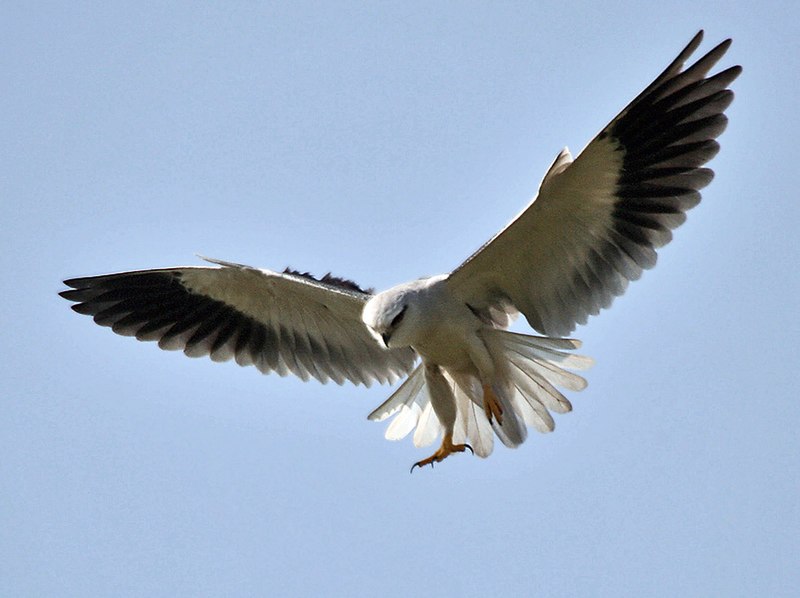
The Black-winged Kite is a small, diurnal bird of prey in the Accipitridae family. It can be found throughout Palearctic and Afrotropical regions.
This species stands out from other birds of prey due to its unique ability to hover over open grasslands like kestrels do.
Its wings are black with white patches on them while its body has gray feathers, giving it a distinct look from the rest of the accipiters.
The underside is mostly white with some barring near the tail area that helps distinguish this species from others.
They feed mainly on insects but will also eat rodents, lizards and even snakes if they come across one.
Because these birds hunt during daylight hours, their diet changes as time passes by – making them quite adaptive hunters.Scientific classification:
| Kingdom | Animalia |
| Phylum | Chordata |
| Class | Aves |
| Order | Accipitriformes |
| Family | Accipitridae |
| Genus | Elanus |
| Species | E. caeruleus |
Also Featured In: Birds Of Côte d’Ivoire, Bulgarian Birds
8. Grey Plover
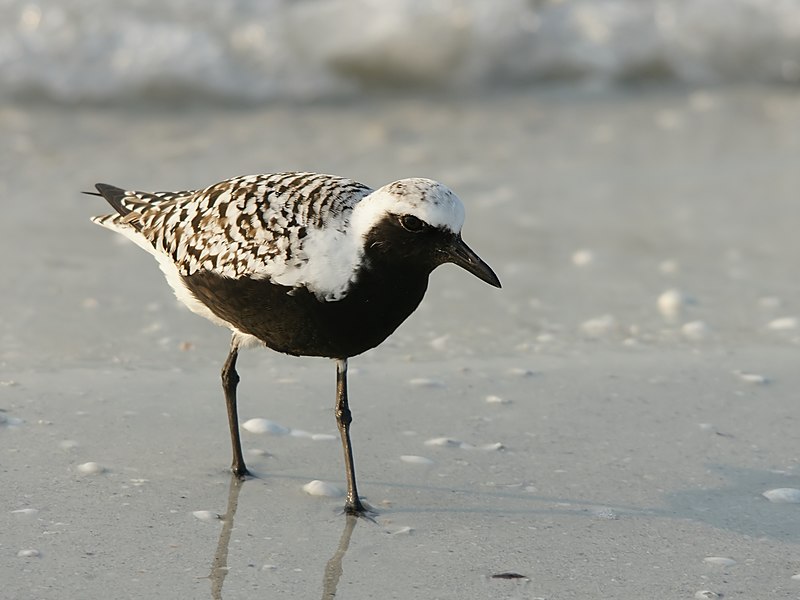
The Grey Plover is a large plover bird which breeds in the Arctic regions. It then migrates over long distances, and can be found on coastlines around the world when not breeding.
The species was first described by Swedish naturalist Carl Linnaeus in 1758 under its binomial name “Tringa squatarola”.
In addition to being known as grey plovers or black-bellied plovers, they are also sometimes referred to as “black-breasted lapwings” due to their distinctive plumage that features white underneath with dark greys above.
These birds inhabit beaches, mudflats and saltmarshes where they feed mainly on small invertebrates such as worms and insects.Scientific classification:
| Kingdom | Animalia |
| Phylum | Chordata |
| Class | Aves |
| Order | Charadriiformes |
| Family | Charadriidae |
| Genus | Pluvialis |
| Species | P. squatarola |
Also Featured In: Birds of Netherlands, Birds that can be Seen in Outer Banks
9. Black Tern
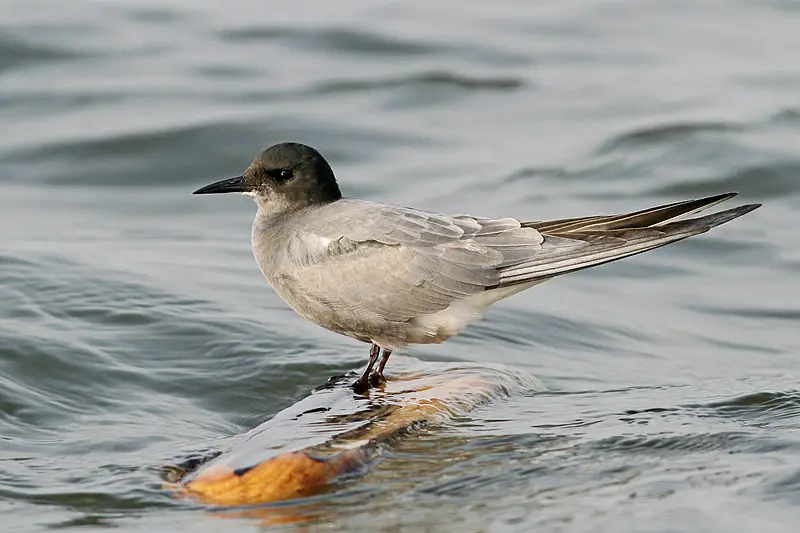
The black tern is a small, yet distinctive bird found in or near inland water habitats throughout Europe, Western Asia and North America.
Its plumage appears darkly coloured from a distance but can shine with an iridescent blue hue up close when breeding season arrives.
It’s name is believed to come from Old English words ‘blue darr’ which references the colour of its feathers in certain lights.
The genus name Chlidonias derives from Greek meaning ‘swallow-like’ due to its similar appearance and behaviour to these birds while fishing for food over shallow waters.
An interesting species, it has made appearances in artwork dating back centuries as well as more recently inspiring music compositions.Scientific classification:
| Kingdom | Animalia |
| Phylum | Chordata |
| Class | Aves |
| Order | Charadriiformes |
| Family | Laridae |
| Genus | Chlidonias |
| Species | C. niger |
Also Featured In: Most Beautiful birds of Greece, Birds You’ll Find in Moldova
10. Wood Hoopoe
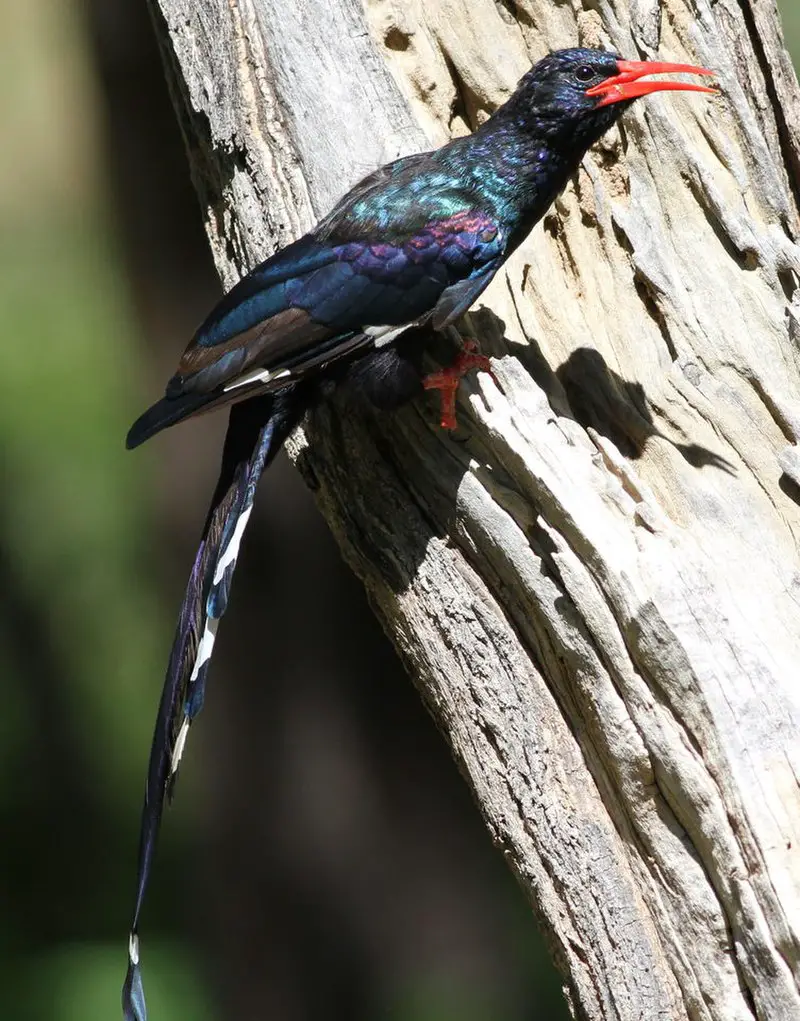
The Wood Hoopoe bird is a small African species found south of the Sahara Desert. They are not migratory and belong to the family Phoeniculidae. Fossil evidence reveals that this family once had a more extensive distribution.
The Wood Hoopoes are related to other passerine birds, and their family is currently limited to Sub-Saharan Africa.
Furthermore, they are also known as Scimitarbills and are characterized by their unique beak shape, which is curved and resembles a scimitar sword.
These birds are typically found in areas with dry forests and woodlands, and they feed on insects and spiders.
Wood Hoopoes are well-known for their distinctive calls, and their presence is often signaled by their loud single-note whistle calls.
Despite their attractive appearance and unique features, however, Wood Hoopoes are not commonly kept as pets due to their specialized dietary requirements and restricted range.Scientific classification:
| Kingdom | Animalia |
| Phylum | Chordata |
| Class | Aves |
| Order | Bucerotiformes |
| Family | Phoeniculidae Bonaparte, 1831 |
Also Featured In: Native Birds of Equatorial Guinea,
11. Buteos
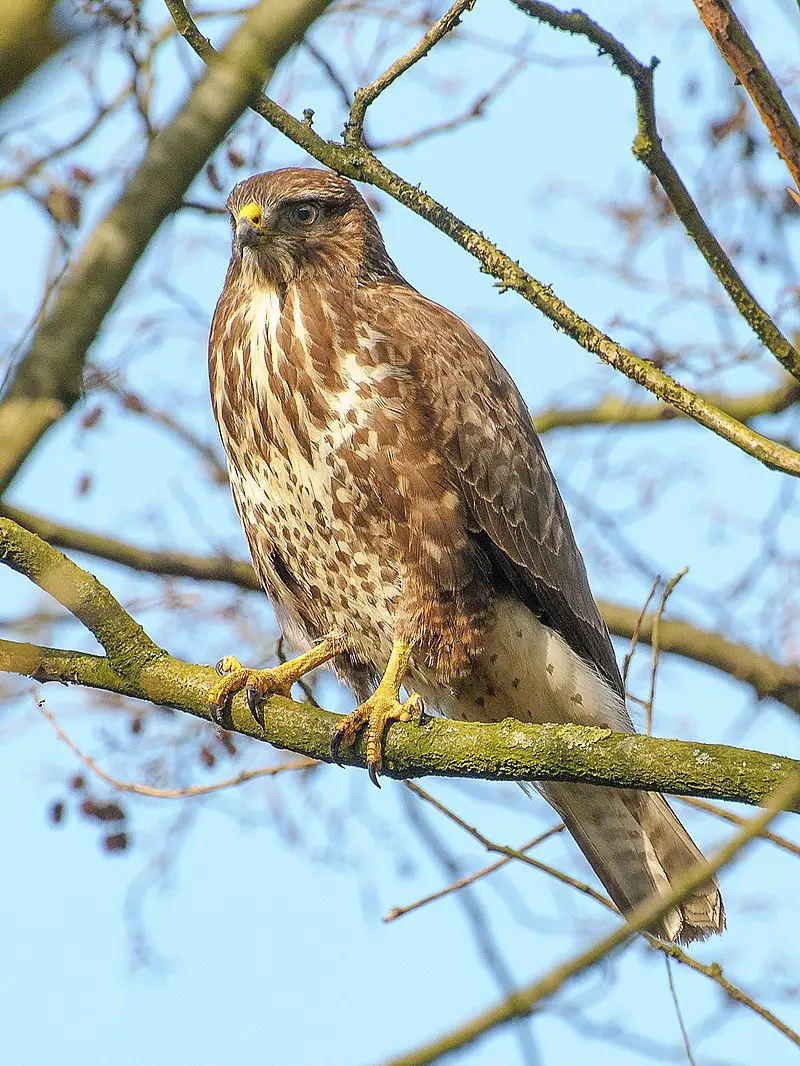
Buteos are robust-bodied birds of prey with broad wings that belong to the genus Buteo. The term “buzzard” is commonly used for members of this genus in the Old World, whereas “hawk” is used in the New World.
However, both terms are ambiguous, and some organizations prefer to use the Latin name of the common buzzard, Buteo, to avoid confusion.
Buteos are medium to fairly large birds, known for their powerful flying abilities and hunting skills.
These raptors are wide-ranging and can be found in a variety of habitats, including open grasslands, forests, and coastal areas.
Overall, Buteos are fascinating birds that play an important role in maintaining the ecological balance of their ecosystems.Scientific classification:
| Kingdom | Animalia |
| Phylum | Chordata |
| Class | Aves |
| Order | Accipitriformes |
| Family | Accipitridae |
| Subfamily | Buteoninae |
| Genus | Buteo Lacépède, 1799 |
Also Featured In: Birds that Live in the Deserts, Birds You’ll Find in Sonoran